ZHCSIU6F September 2018 – June 2021 TPS2663
PRODUCTION DATA
- 1 特性
- 2 应用
- 3 说明
- 4 Revision History
- 5 Device Comparison Table
- 6 Pin Configuration and Functions
- 7 Specifications
- 8 Parameter Measurement Information
-
9 Detailed Description
- 9.1 Overview
- 9.2 Functional Block Diagram
- 9.3
Feature Description
- 9.3.1 Hot Plug-In and In-Rush Current Control
- 9.3.2 PGOOD and PGTH
- 9.3.3 Undervoltage Lockout (UVLO)
- 9.3.4 Overvoltage Protection (OVP)
- 9.3.5 Input Reverse Polarity Protection (B_GATE, DRV)
- 9.3.6 Reverse Current Protection
- 9.3.7 Overload and Short Circuit Protection
- 9.3.8 Output Power Limiting, PLIM (TPS26632, TPS26633, TPS26635 and TPS26636 Only)
- 9.3.9 Current Monitoring Output (IMON)
- 9.3.10 FAULT Response ( FLT)
- 9.3.11 IN_SYS, IN, OUT and GND Pins
- 9.3.12 Thermal Shutdown
- 9.3.13 Low Current Shutdown Control (SHDN)
- 9.4 Device Functional Modes
-
10Application and Implementation
- 10.1 Application Information
- 10.2
Typical Application: Power Path Protection in a PLC System
- 10.2.1 Design Requirements
- 10.2.2 Detailed Design Procedure
- 10.2.3 Application Curves
- 10.3 System Examples
- 10.4 Do's and Don'ts
- 11Power Supply Recommendations
- 12Layout
- 13Device and Documentation Support
- 14Mechanical, Packaging, and Orderable Information
7.7 Typical Characteristics
–40°C ≤ TA = TJ ≤ +125°C, V(IN_SYS) = V(IN) = 24 V, V( SHDN) = 2 V, R(ILIM) = 30 kΩ, IMON = PGOOD = FLT = OPEN, C(OUT) = 1 μF, C(dVdT) = OPEN. (Unless stated otherwise)


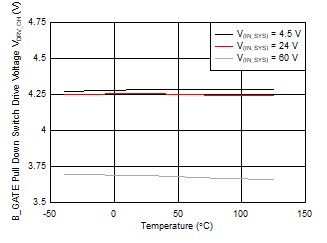
A.
Figure 7-5 B_GATE Pull Down Drive Voltage vs Temperature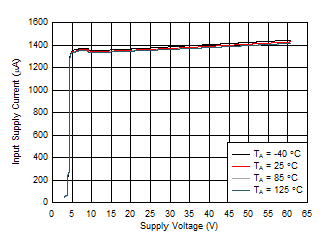

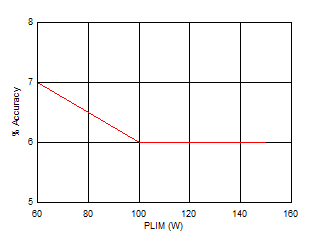
A.
Figure 7-11 Output Power Limiting Accuracy vs PLIM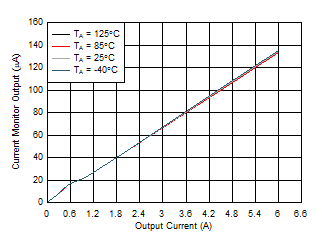
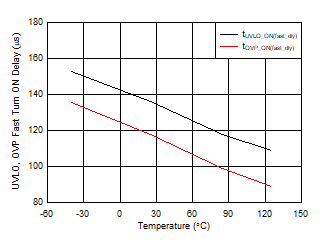
A.
Figure 7-15 UVLO, OVP Fast Turn ON Delay vs Temperature| V(PGTH) > V(PGTHF) |
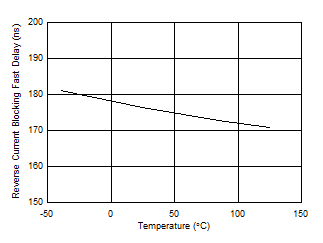
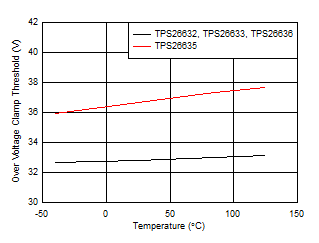
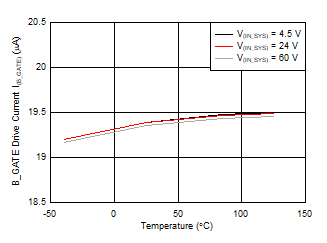
A.
Figure 7-4 B_GATE Drive Current vs Temperature

| V(OUT) = 0 V |

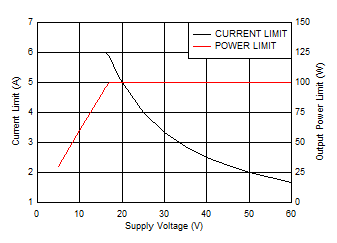
| TPS26632 | R(PLIM) = 100 kΩ | R(ILIM) = 3 kΩ |
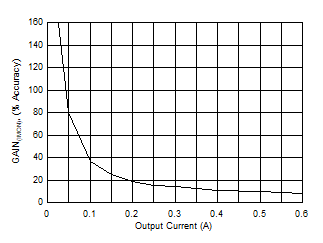
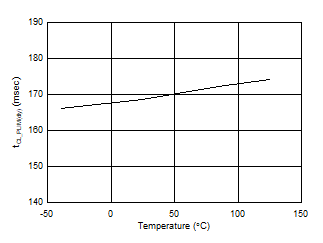
A.
Figure 7-16 Maximum Duration in Current and Power Limiting vs Temperature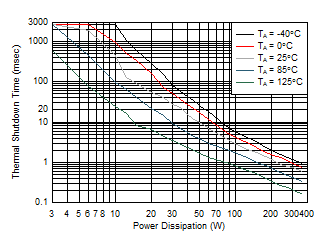
| Taken on VQFN device on EVM Board |